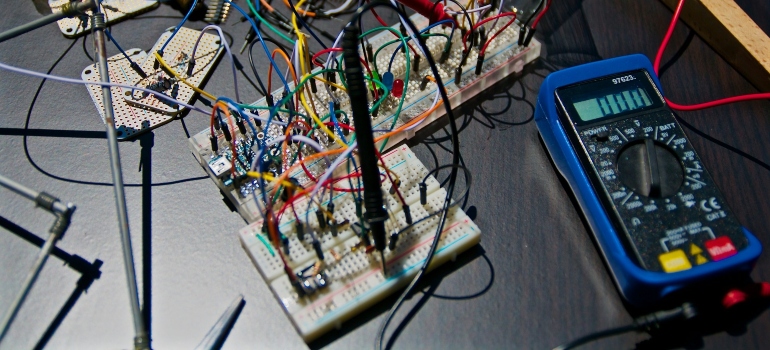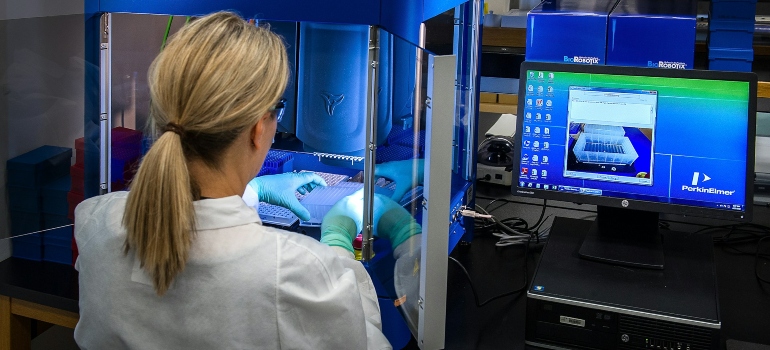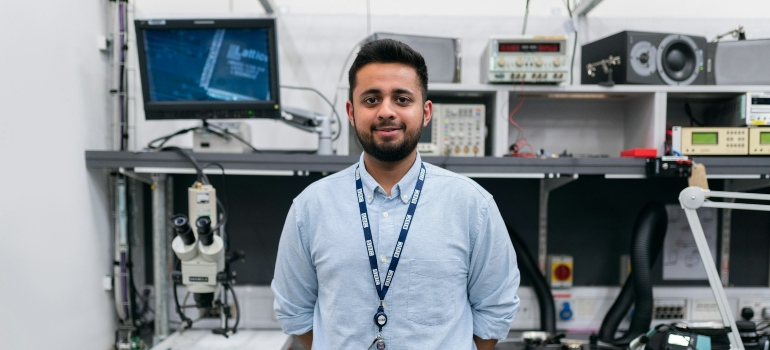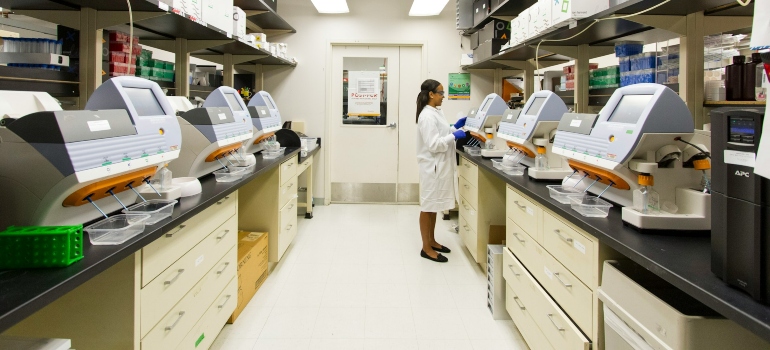Guide to Relocating Tech Labs
Relocating tech labs within educational institutions is a complex work that demands strategic planning, precise execution, and comprehensive post-move support. If you’re in charge of an ICT lab in a high school or an advanced IT lab in a university, you are aware that moving such specialized environments requires more than just packing up equipment and transporting it to a new location. It involves a detailed understanding of the technical requirements, collaboration among various stakeholders, and an unwavering focus on minimizing disruption to educational activities. If you value efficiency and thoroughness, this Peasley Moving & Storage Boise guide is crafted for you. It provides a step-by-step approach to tech lab relocation in Idaho. Suppose you are a local IT director, facilities manager, or academic leader. In that case, this comprehensive roadmap will help you manage all the complexities of moving sophisticated tech environments with the precision they require.
1. Planning Phase
Relocating a tech lab requires meticulous planning to ensure minimal disruption and a seamless transition. The success of the move hinges on a well-structured strategy that accounts for every detail, from initial assessment to final setup in the new location.
Initial Assessment and Inventory
Start by comprehensively evaluating both the current and new tech lab spaces. Measure dimensions precisely, assess electrical and networking requirements, and identify any special equipment needs. In other words, before relocating tech labs begins, you need to focus on:
- Detailed Site Survey: Measure room dimensions, check power outlets, and verify network infrastructure. Consider any specific environmental conditions, such as temperature control for sensitive equipment.
- Equipment Categorization: Group items by type (e.g., computers, servers, peripherals) and note any that require special handling from Boise office movers or temperature-controlled transport.
- Documentation: Create a database or spreadsheet listing all equipment, their serial numbers, and conditions. This will aid in tracking during the move and reinstallation.
The heart of every relocation is creating a detailed inventory of all items. This includes listing every piece of equipment, noting its condition, and identifying special handling requirements for sensitive or fragile items. This step ensures nothing is overlooked and facilitates smoother packing and unpacking processes.

Stakeholder Engagement
Engaging all relevant stakeholders early on is essential. Form a relocation committee comprising IT staff, facilities managers, and academic representatives. Their combined expertise will help address the unique needs of the institution and ensure that all logistical and technical aspects are covered. Developing a communication plan will keep everyone informed and aligned with the relocation timeline:
- Relocation Committee: Include representatives from IT, facilities management, administration, and faculty. Their input is crucial for addressing diverse needs and potential issues.
- Regular Meetings: Schedule frequent meetings to review progress, discuss challenges, and adjust plans as needed. Ensure all voices are heard and concerns are addressed promptly.
- Communication Plan: Develop a strategy to keep all stakeholders informed about timelines, responsibilities, and progress. Use tools like email updates, intranet bulletins, or regular briefings.
A well-defined relocation timeline is the backbone of a successful move. The next step is to outline each phase of the move, from packing to setting up at the new location, and include key milestones and deadlines.
Strategic Planning
Budgeting is another critical component. Prepare a detailed budget that covers all aspects of the move, including packing materials, transportation, insurance, and contingency funds. Ensuring that you have a financial cushion for unexpected expenses will help prevent any disruptions. Additionally, consider future scalability in your plans to accommodate growth and technological advancements. This is where you start:
- Timeline Development: Break down the relocation into stages with specific deadlines. Include tasks like inventory, packing, transport, setup, and testing.
- Budget Planning: Estimate costs for packing materials, commercial equipment movers, insurance, and potential equipment upgrades. Include a contingency fund for unexpected expenses.
- Future-Proofing: Plan for future needs by designing flexible lab layouts that can adapt to new technologies and increased capacity. Consider modular furniture and scalable networking solutions.
- Risk Management: Identify potential risks and develop mitigation strategies. For instance, have backup plans for critical equipment failures or transport delays.
A thorough step-by-step plan ensures a smooth transition to your new tech lab, minimizing downtime and keeping everything running efficiently. The idea is to reduce disruptions and keep the focus on educational goals, helping the institution maintain a continuous and effective learning environment.

2. Pre-Move Preparation
Effective pre-move preparation sets the stage for a successful tech lab relocation. The phase focuses on designing the new lab layout and preparing all equipment to ensure a smooth and efficient move.
Lab Layout Design
Designing the layout of the new lab is crucial to meet both current and future needs. Collaborate with IT professionals to ensure that the new space accommodates all technical requirements, including power outlets, network cabling, and ventilation. The layout should also consider the ease of access for students and staff, promoting a functional and productive environment. Incorporate flexibility in the design to allow for future scalability, ensuring that the lab can adapt to new technologies and an increasing number of users.
Ergonomics plays a vital role in the new ICT lab setup. Choose furniture that supports user comfort and productivity, such as adjustable desks and ergonomic chairs. Modular furniture solutions are particularly beneficial as they can be reconfigured easily to adapt to changing needs. Additionally, ensure that workstations are set up to minimize strain on users, with monitors at eye level and keyboards positioned to support comfortable typing.
Equipment Preparation
Preparing the equipment for the move involves much more than packing. Start by backing up all critical data to prevent any loss during transit. This is a non-negotiable step that safeguards the institution’s information and ensures continuity. Service and clean all equipment to ensure it is in optimal condition for reinstallation.
Labeling all equipment and moving boxes Boise providers offer clearly is essential for efficient unpacking and setup after relocating tech labs. Use a consistent labeling system that indicates the contents, handling instructions, and the specific location in the new lab. This practice not only speeds up the unpacking process but also minimizes the risk of errors and damage. Ensure that sensitive or fragile items are packed with appropriate protective materials and handled with care throughout the move.

Coordination and Communication
Effective coordination and communication are key to a smooth pre-move preparation phase. Establish a detailed timeline that outlines all tasks, deadlines, and responsible parties. This timeline should cover everything from the initial packing to the final setup at the new location, ensuring that every step is accounted for and executed on schedule.
Maintain open lines of communication with all stakeholders involved in the move. Regular updates and meetings will help keep everyone informed about progress, address any concerns, and make necessary adjustments to the plan. Clear communication ensures that all team members are on the same page and that any potential issues are identified and resolved promptly.
3. Relocating Tech Labs Phase
The execution phase involves the actual move, which must be handled with precision to avoid any damage or loss of equipment. The stage is critical for ensuring that all preparations come together seamlessly and that the new tech lab is set up efficiently and effectively.
Packing and Transportation
Proper packing is essential for protecting sensitive and valuable equipment. Use antistatic materials and secure packaging to safeguard items during transit. Clear labeling of boxes will help movers understand the handling requirements and destination of each item, reducing the risk of damage. It’s important to pack items in a way that maximizes protection, using bubble wrap, foam padding, and sturdy boxes designed to handle the weight and delicacy of tech equipment.
Transportation logistics should be managed by a moving company experienced in handling technical equipment. Coordination with the moving services Boise ID team is crucial to ensure timely and safe transportation. Regular updates and communication with the relocation committee will keep the process on track and address any issues promptly.
Setting Up the New Lab
Upon arrival at the new location, the setup process begins. Start with the installation of essential infrastructure, including power, networking, and cooling systems. Ensuring that these systems are operational before unpacking the equipment will facilitate a smoother and quicker setup. Arrange for IT professionals to be on-site during this phase to handle any technical issues that may arise and to ensure that all equipment is installed according to the layout plan.
Unpacking should be systematic and organized. Begin with critical systems such as servers and networking equipment to establish the lab’s backbone. Once these are in place and tested, proceed with setting up individual workstations and peripheral devices. That way, you’re ensuring that the lab’s core functions are operational as quickly as possible.

Testing and Verification
Testing is an integral part of the execution phase. Once all equipment is set up, conduct thorough testing to ensure everything is functioning correctly. This includes verifying network connectivity, checking hardware functionality, and ensuring software installations are intact. Any issues discovered during testing should be addressed immediately to prevent further complications.
Regular updates and documentation during the setup and testing phase are crucial. Keeping a log of installed equipment, tested functionalities, and identified issues will help in maintaining an organized approach and ensuring nothing is overlooked. Engage with stakeholders to gather feedback and verify that the new setup meets all requirements and expectations.
4. Post-Move Support
Post-move support is vital to ensure that the new lab is fully operational and any issues are swiftly addressed. This phase in relocating tech labs ensures that the transition sets the foundation for continuous improvement and efficient operation.
Testing and Quality Assurance
Upon arrival at the new location, conduct thorough testing of all systems and equipment. This includes verifying network connectivity, ensuring software installations are intact, and checking hardware functionality. Collect feedback from users to identify any problems and areas for improvement. Addressing these issues promptly will minimize downtime and ensure a smooth transition.
Providing ongoing support is crucial. Establish a helpdesk for immediate assistance and schedule regular maintenance checks to keep the lab running smoothly. Staff training sessions on any new equipment or software will also help maintain operational continuity. Ensure that IT staff are available to troubleshoot any initial issues that may arise as users become accustomed to the new environment.
Continuous Monitoring and Support
Continuous monitoring of the ICT lab’s performance is essential to identifying and resolving any issues that arise after the initial move. Implementing monitoring tools can help track the performance of network systems, hardware, and software, providing real-time data that can be used to address issues proactively. Regular check-ins with staff and users will also help gather feedback and make necessary adjustments.
Ongoing support should include periodic training sessions to keep staff updated on any new software or system updates. Providing resources such as user manuals and quick reference guides can also help you reduce the learning curve and ensure that everyone can use the new lab facilities effectively.

Review and Optimization
Conduct a post-move review to evaluate the relocation process. Discuss the challenges faced and lessons learned to optimize future relocations. Such a reflective process will help you identify areas for improvement and ensure a more streamlined approach in the future. Engage with all stakeholders to gather comprehensive feedback and use this data to refine processes and enhance the overall relocation strategy.
Planning for future scalability and potential upgrades is essential while moving a lab. Ensure that the new lab setup can accommodate growth and technological advancements. Implement sustainable practices, such as recycling old equipment and using energy-efficient devices, to promote a culture of sustainability and reduce the environmental impact of the move.
Why This All Matters When Relocating Tech Labs
First and foremost, minimizing downtime is essential. Educational institutions rely heavily on their tech labs for daily operations, research, and instruction. Any disruption can have significant impacts on students’ learning experiences and the institution’s ability to fulfill its educational mission. A well-planned relocation ensures that all equipment is handled safely and efficiently, reducing the risk of damage. Your institution can avoid costly repairs or replacements and ensure that all lab resources are available and operational from day one.
Furthermore, engaging stakeholders and maintaining clear communication throughout the process helps in addressing specific needs and concerns, ensuring that the new lab setup meets all functional and educational requirements. Lastly, a successful relocation sets the foundation for future growth and adaptability. A forward-thinking approach supports the long-term educational goals of the institution, enhancing its ability to provide cutting-edge resources and opportunities for students and faculty.
In essence, relocating tech labs properly ensures continuity, protects valuable resources, and positions the institution for future success. Ultimately, it enhances the educational environment, supporting the institution’s mission to provide high-quality education and research opportunities.

